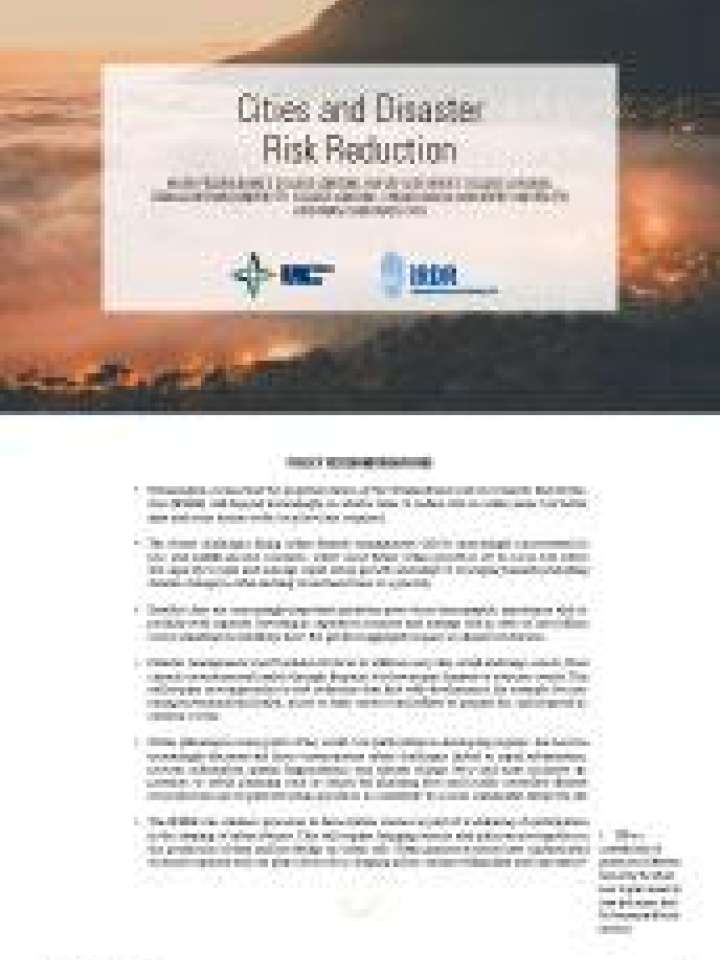Cities and disaster risk reduction
Successful implementation of the Sendai Framework for Disaster Risk Reduction (SFDRR) will depend increasingly on what is done to manage risk in urban areas. Ongoing urbanization processes accumulate risk in cities and neighbourhoods, but are also a major opportunity space for risk reduction.
Recommendations include:
- The future challenges facing urban disaster management will be increasingly concentrated in low- and middle-income countries, where most future urban growth is set to occur, but where the capacity to plan and manage rapid urban growth and adapt to emerging hazards (including climate change) is often lacking. Investment here is a priority.
- Smaller cities are increasingly important priorities given their demographic importance and especially weak capacity. Investing in capacity to monitor and manage risk in cities of one million or less inhabitants will likely have the greatest aggregate impact on disaster reduction.
- Disaster management must broaden its focus to address every day, small and large events, from chronic environmental health through frequent but low-impact hazards to extreme events. This will require new approaches to risk reduction that link with development, for example by combining environmental health, access to basic services and efforts to prepare for, and respond to, extreme events.
- Urban planning in many parts of the world, but particularly in developing regions, has become increasingly disconnected from contemporary urban challenges linked to rapid urbanization, poverty, informality, spatial fragmentation and climate change. New and more inclusive approaches to urban planning such as citizen-led planning fora and locally controlled disaster reconstruction are required if urban growth is to contribute to a more sustainable future for all.
- The SDFRR can enhance processes to democratize science as part of a widening of participation in the shaping of urban futures. This will require bringing science and policy actors together in the production of data and knowledge on urban risk. Urban grassroots actors have sophisticated technical capacity and can play a key role in shaping policy, and providing data and experience
Explore further
